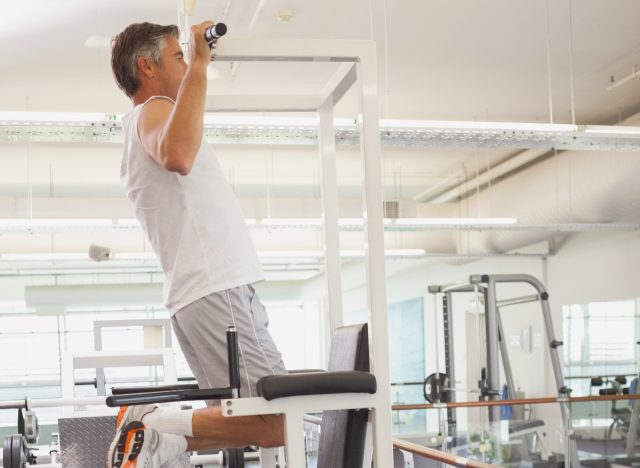If You Can Do This Many Pull-Ups Without Stopping, Your Upper Body Is Stronger Than 90% of People

Are you a fan of pull-ups? If not, you may want to consider adding them to your workout routine. This compound exercise is exceptional for developing upper-body strength. Pull-ups require you to use your own body to lift yourself up to the bar—a true test of functional fitness. In doing so, you engage multiple muscle groups, improve grip strength, and enhance core stability. Pull-ups offer a great variety of benefits that can significantly impact your overall performance at the gym.
We spoke with experts who share just how many consecutive pull-ups you should be able to perform that will determine whether you’re stronger than 90% of your peers. Sounds pretty impressive, right?
What Makes Pull-Ups an Exceptional Indicator of Upper-Body Strength

“Pull-ups reveal something that many exercises can’t hide—your true strength relative to your body weight,” explains Karen Ann Canham, CEO and founder of Karen Ann Wellness. “Machines can assist you, momentum can cheat you, and a lot of exercises let other muscles compensate. But with pull-ups, you’re lifting your entire body against gravity using some of the most demanding muscles in the upper body.”
If you can lift your own body weight repeatedly with control, that’s a telltale sign of stability, muscular strength, and a nervous system that can successfully engage multiple muscle groups at once.
You’re Working The Muscles That Matter Most

Pull-ups engage a powerful blend of muscles that promote long-term mobility, improved posture, and all-around successful daily movement. These muscles include the biceps, forearms, lats, rhomboids and mid-back muscles, and core.
“As we age, these muscles tend to weaken first, leading to poor posture, neck pain, back discomfort, and decreased functional strength. Pull-ups help reverse that trajectory,” Canham tells us.
This Number Puts You In The Top 10%

A solid benchmark that classifies someone as stronger than roughly 90% of their peers is being able to perform 12 to 15 strict pull-ups without breaking.
“‘Strict’ matters—full hang at the bottom, no swinging, chin above the bar every rep,” Canham explains. “Most adults can’t perform a single full pull-up, so being able to do well over ten means your strength, coordination, tendon integrity, and muscular endurance are all far above average.”
Your Daily Life Gets Noticeably Easier

Those able to complete “strict” pull-ups typically have better shoulder mobility, higher grip strength, stronger connective tissue, better nervous system efficiency, and a healthier strength-to-weight ratio, Canham notes.
“These are the qualities that support everyday activities—lifting groceries, carrying kids or luggage, pulling yourself up or over something, and maintaining good posture throughout the day,” she adds.